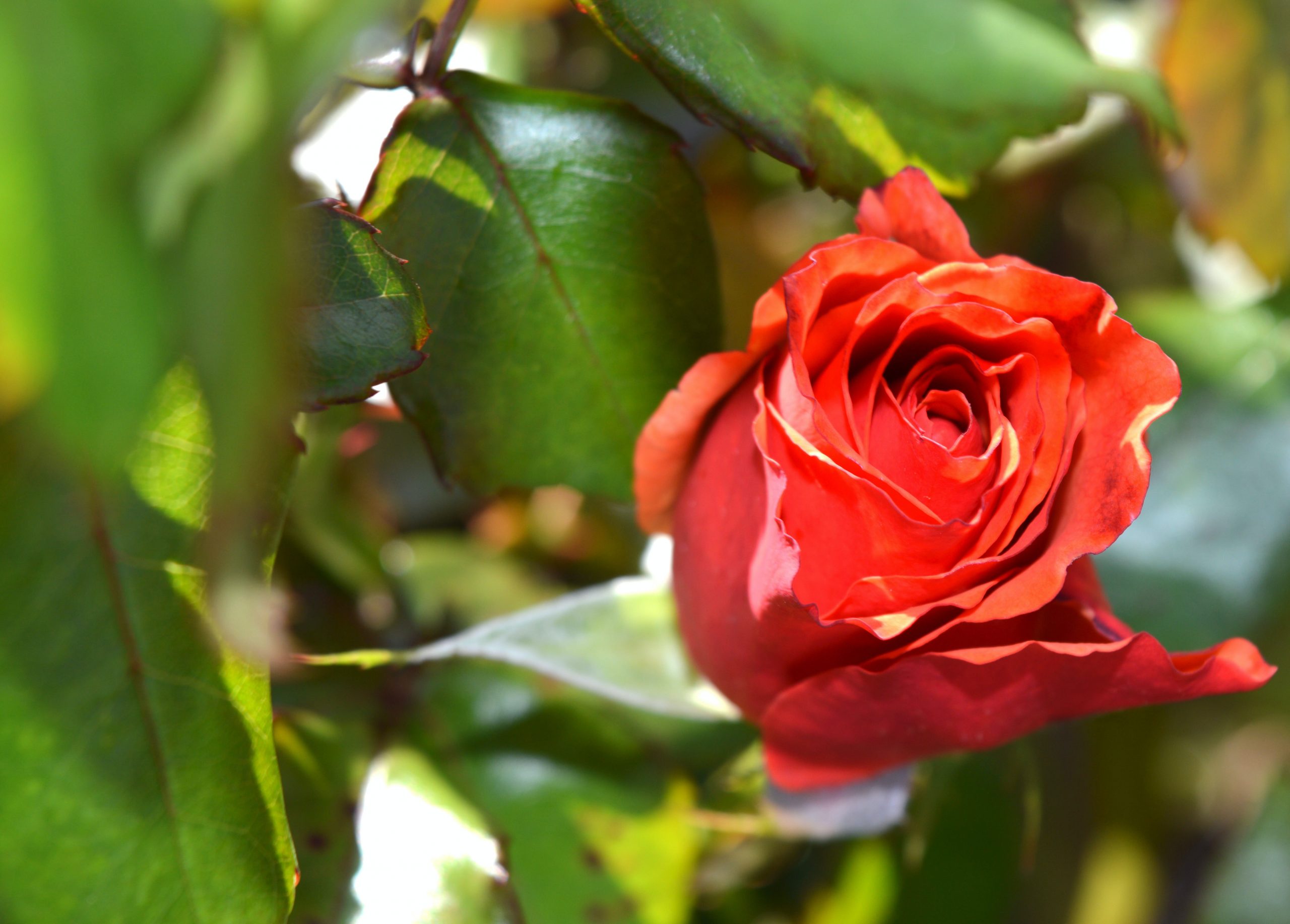As the wind blows and the snow flies, you might find yourself gazing out your window at your garden. Are you dreaming of big and beautiful spring roses with luscious warm scents? For many gardeners, roses play an integral role in the garden – they are either beautiful focal plants, the perfect privacy screen, or simply a breath of fresh air in early spring. No matter what role roses play in your garden, you won’t want to miss these tips and tricks to have the healthiest roses of all in your 2021 garden.
Unlike some garden plants, roses do benefit from a little extra TLC, especially in the spring. The first thing you want to do once the weather breaks is to remove any winter rose protection you applied in the fall. After that, take note of the rose’s condition and do the following to get your beauty off to a great start.
Proper pruning
Although not every type of rose requires pruning, spring is the best time to get the job done. Proper pruning starts with sharp and clean pruning shears. If you did not already clean your shears in the fall, do so now, before you cut your rose bushes. Soak pruners in a solution of one part bleach and nine parts water for an hour and rinse well with clean water. Dry thoroughly before using. Pruning your rose bushes before the leaf buds open will send energy into new growth, and this is what you want.
In warmer climates, spring pruning stars in January. If you live in areas with warm winters such as Florida and Southern California, you may just be pruning out dead wood and doing some thinning. For those in areas with freezing winter temperatures, pruning starts in April. Pruning too soon in these areas can result in damage from winter temps and weather.
Feeding
Once plants, including roses, come out of winter dormancy, it is time to concentrate on feeding. Giving them a nutritional boost will revive and ready them for the growing season. There are several excellent feed mixes available, but any all-purpose food will do. Follow the feeding directions on the package. If you prefer to mix your feed, here is my favorite, time-tested recipe for success.
What you need
- 1 part fish meal
- 1 part alfalfa meal
- 1 part greensand
- 1 part gypsum
- ½ part bone meal
How to make it
- Mix all the ingredients well and sprinkle around the plant’s base, working well into the soil.
- Water well
Something I learned a long time ago is to add a handful of Epsom salts when you feed. This extra magnesium is the perfect superfood for hungry roses.
Black spot spray
Roses, unless you have specific disease-proof versions, are prone to fungus diseases. Even organically grown roses benefit from preventative spring spraying. Black spot is a particularly nasty fungus that plagues roses. Sometimes it overwinters on the rose and appears in the spring.
In the past, I have used lime sulfur to kill fungus and also horticultural oil. I have recently used an alternative spray consisting of baking soda ( my favorite go-to natural substance), bleach-free dish soap, and water. To make, simply combine a tablespoon of baking soda with a gallon of water. Add two drops of dish soap ( which helps keep the baking soda on the leaves). Pour mixture into a spray bottle and spray both sides of leaves well. Do this weekly and after rain for best results. The exciting thing about this mixture is that the baking soda changes the pH level on leaf surfaces, making it difficult for the black spot to attack plants.
An ounce of prevention
When it comes to black spot and other rose diseases, an ounce of prevention goes a long way. This is what I mean when I spoke of TLC earlier. If you desire to have big and beautiful roses year after year, here are a few things to keep in mind:
- Choose the right rose for your climate. If you are unsure, check with your local Cooperative Extension office or garden supply store.
- Make sure that your roses get at least six hours of direct sunlight daily.
- Provide winter protection in cold areas.
- Always water roses from the bottom. Watering from the top means that water sits on the foliage, making your rose prone to black spot and other fungal diseases.
- Remove all dead and diseased plant parts and keep the growing area clean.
- Prune according to the type of rose.
- Keep your gardening tools sterilized.
Roses, the symbol of love, require love to thrive. Once you get in the hang of just what your rose needs, it will become like second nature to provide the care necessary. Don’t let the thought of a little extra time spent in the garden rob you of the rich pleasure of owning a rose, or many roses, for that matter. They are indeed a joy to behold when they burst forth in beautiful color and enticing aroma.
Happy Growing,
Susan, CBHC and Master Gardener



